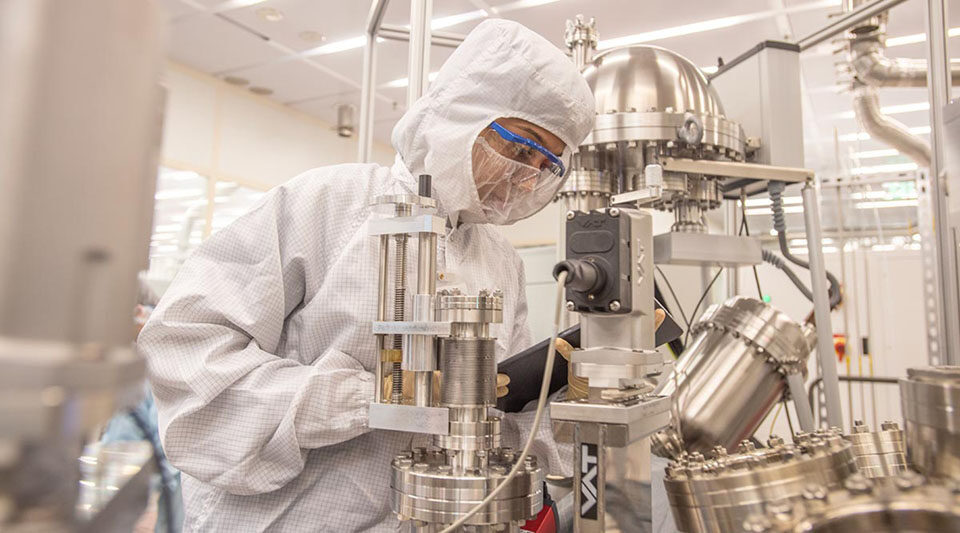Chris Hinkle is on the hunt for new materials.
He needs them to power faster, smaller and more efficient chips for next-generation microelectronics, so only materials with the right chemistry and structure will do.
“Current materials are not able to keep up with the growing needs for very tightly packed components,” said Hinkle, Leonard C. Bettex Professor of Electrical Engineering at the University of Notre Dame. “The materials used previously are simply falling short of performance requirements.”
Hinkle, who is principal investigator on a new NSF-funded, multi-institutional semiconductor project, is looking for “switchable” semiconductor materials that can either conduct or impede the flow of electricity when activated by an external trigger.

Those switchable insulator-to-metal transition materials (or IMTs) are promising because they transition more quickly between on/off states, a feature that could lead to faster data transmission and reception. IMTs also enable new memory devices, making possible further chip miniaturization and energy efficiency.
Researchers in Hinkle’s multi-institutional team—experts in computational and experimental materials physics, data science, and device engineering—are using a “codesign” framework to fast track the discovery of these new materials. New materials are immediately tested with machine learning techniques and by quickly integrating them into new devices. Industry partners can then quickly incorporate the best materials into prototypes for further evaluation.
“To find these switching materials, we can’t make one material, do the characterization, make the device, and then try again. That takes too long,” said Hinkle, whose lab synthesizes materials in Notre Dame’s Nanofabrication Facility. “We need to test multiple new materials, in parallel through new techniques, eliminating most of them quickly and getting the good ones into devices much earlier.”
In a related NSF-funded project, Hinkle is working with an interdisciplinary team to find new materials for new metal wires. The tiny wires necessary for smaller chips have slower electrons than big wires, making them less efficient carriers of electrical current. Using codesign methods, the team has already discovered a new material that outperforms current state-of-the-art copper.
“For these projects, you have to consider how the whole system impacts the physics of a new material and device, and that’s what we’re trying to do,” said Hinkle.
![Doctoral student [name] conducts research using the MBE machine.](https://engineering.nd.edu/wp-content/uploads/2024/03/Hinkle-student-3-1024x1024.jpg)
These NSF-funded projects include an education and workforce development initiative, involving leaders from Historically Black Colleges and Universities and Minority Serving Institutions, scientists from research intensive universities, and development engineers from companies in the semiconductor industry.
— Karla Cruise, Notre Dame Engineering; photos by Wes Evard, Notre Dame Engineering
(Header image) Doctoral student in electrical engineering Meghana Remella uses x-ray photoelectron spectroscopy (XPS) to analyze sample.
